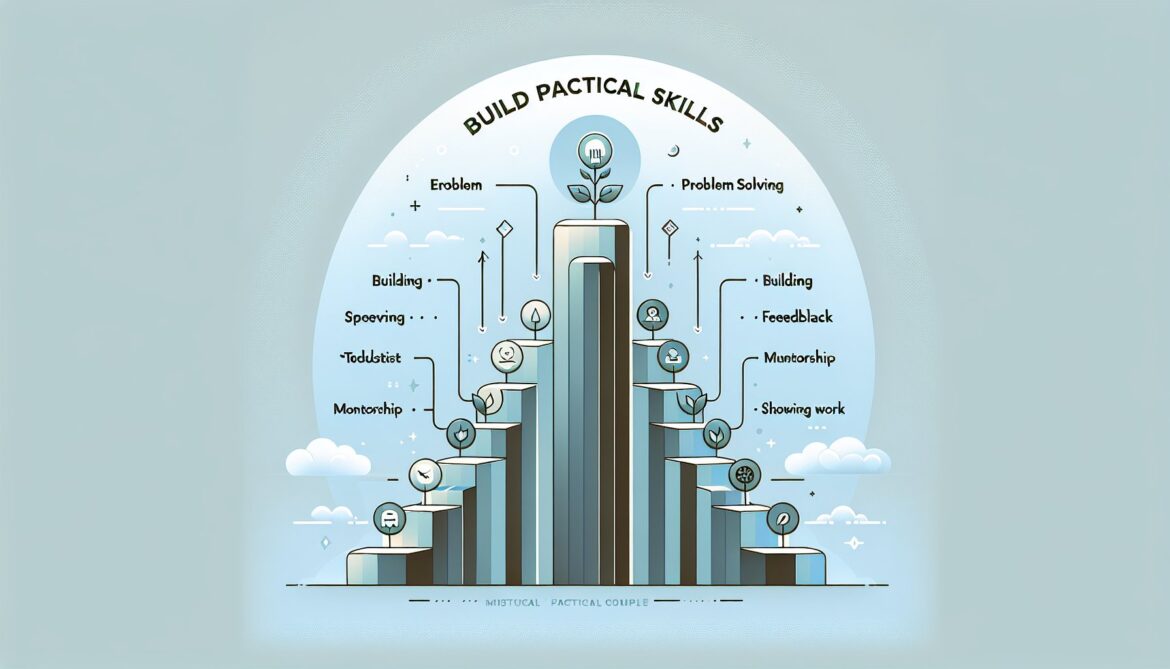We’ve spent the last week looking at what’s broken. The measurement problem. The creativity tax. The credibility trap. The evidence everywhere that practical skills matter more than credentials.
Now comes the hardest part: what do we actually do about it?
The system is broken. We’ve established that. But you still have to live in it. You still need to eat. You still need a job. So how do you build real competence when the system is optimized for credentials?
The Practical Path Framework
Here’s what I’ve learned: building competence outside the system is possible. It’s not always easy, but it’s possible. And it starts with understanding that credentials and competence are two different things that you need to pursue simultaneously.
You don’t have to choose between them. You can get the credential while building the competence. But you have to be intentional about it. The system won’t do it for you.
Step 1: Choose a Problem Worth Solving
Real learning starts with a problem that matters. Not a problem from a textbook. A real problem you actually care about solving.
For me, it was building things. I cared about making software that worked. That became my anchor. Every skill I learned was in service of that.
What’s your problem? What do you actually want to build, create, or solve? Start there. Because learning for learning’s sake is abstract. Learning to solve something you care about is concrete.
Step 2: Build Before You Learn the Theory
Conventional learning says: learn the fundamentals first, then build. That’s backwards. Build first, learn the theory later.
Start with something small and concrete. Build it. It’ll be messy. It’ll be wrong in ways you don’t understand. Then learn the theory that explains why it’s wrong. Now the theory makes sense because you’ve felt the problem.
This is how apprenticeships work. You shadow someone, you do the work, you make mistakes, and then you learn the principles that explain those mistakes. It’s the opposite of school, and it works better.
Step 3: Get Feedback From Reality
The best feedback isn’t from a teacher or a grade. It’s from real consequences. Does it work or doesn’t it? Does someone want to use it or don’t they? Does it solve the problem or does it create new ones?
Real feedback is harsh. It doesn’t care about your feelings. It doesn’t give partial credit for effort. But it’s also incredibly effective at teaching you what actually works.
Find ways to get real feedback. Ship something to real users. Ask someone real to try your work. Get rejected and learn why. This is how you build competence that transfers.
Step 4: Learn From People, Not Just Courses
Online courses are useful. Books are useful. But the fastest way to learn is from someone who already knows.
Find a mentor. Someone who’s already solved the problems you’re trying to solve. Offer to work with them. Shadow them. Ask questions. This is how humans have learned for most of history.
You don’t need formal permission to do this. You don’t need a program or a degree. Find someone doing something you want to be able to do, and ask if you can help.
Step 5: Show Your Work Publicly
This is the modern equivalent of a portfolio. You don’t need credentials if you can show what you’ve built.
A GitHub profile full of projects is worth more than a degree from a good university. A portfolio of written work is worth more than a journalism degree. Projects you’ve shipped are worth more than courses you’ve completed.
Show your work. Put it out there. Let people see what you can do. This is how you bypass the credential filter and get judged on actual capability.
Step 6: Keep the Credentials Too
Here’s the uncomfortable truth: you still probably need credentials. The system is still in place. Employers still filter by them.
So get the degree if you need it. Pass the exams. Jump through the hoops. But don’t pretend that’s where your real education is happening.
Your real education is happening when you’re building something, failing, getting feedback, and learning from it. Your real education is happening outside the system.
The credential just gets you through the door. Your actual competence is what keeps you in the room.
The Practical Path Isn’t Easy
I’m not going to pretend this is easier than just getting a degree. In some ways, it’s harder. You don’t have a clear path. You don’t have someone telling you what to do. You have to figure it out.
But here’s what you get: actual competence. Real skills that transfer. The ability to learn anything because you’ve learned how to learn by doing.
And you get it faster than the degree provides, and you retain it better, because you learned it through application.
What This Looks Like
Tomorrow, we’re going to look at real examples of people who’ve actually done this. People who built competence outside the system and succeeded because of it.
Not the tech stories we already told. Broader stories. People from different fields who figured out the practical path and made it work.







